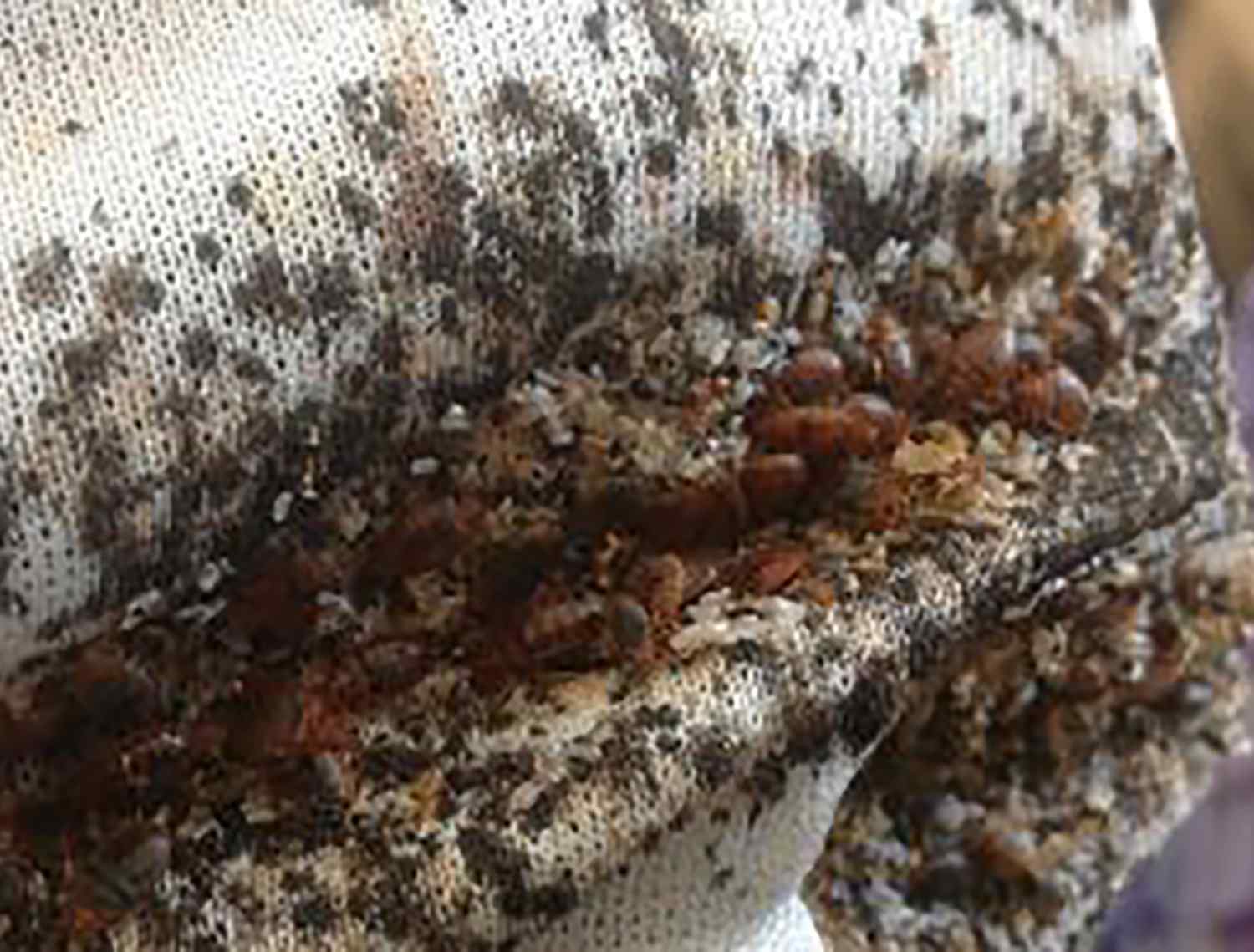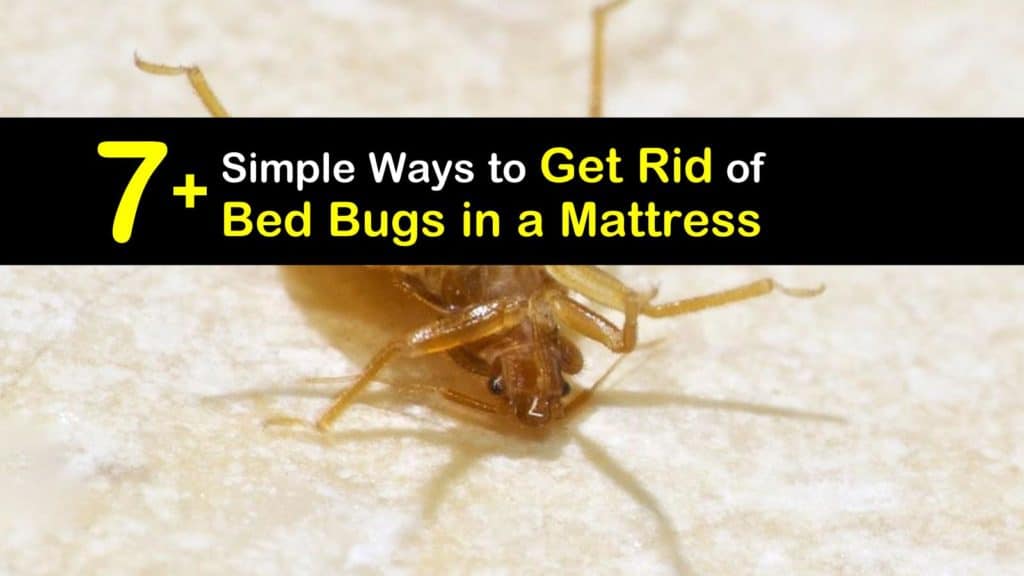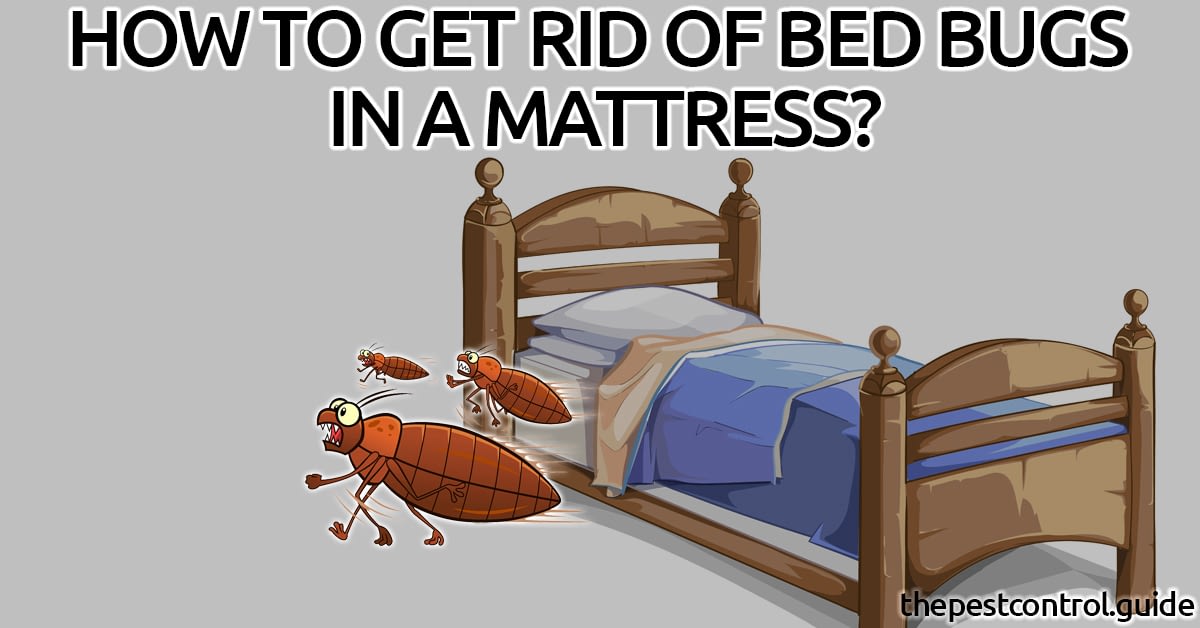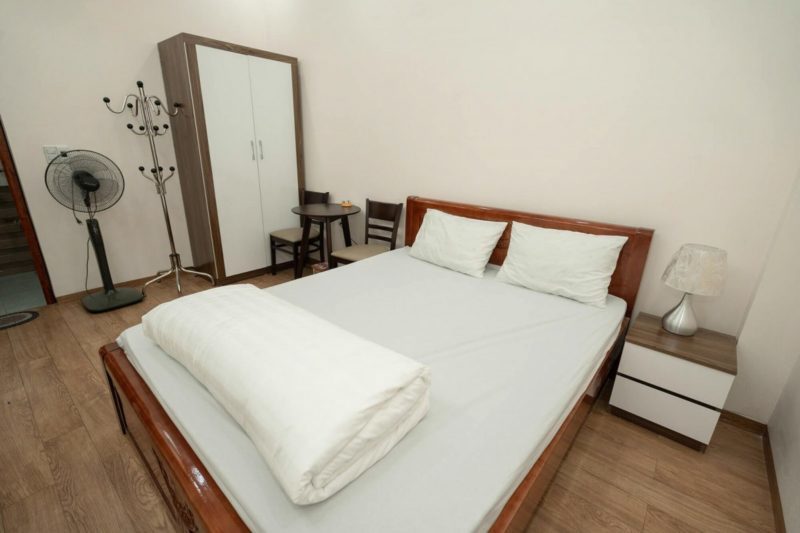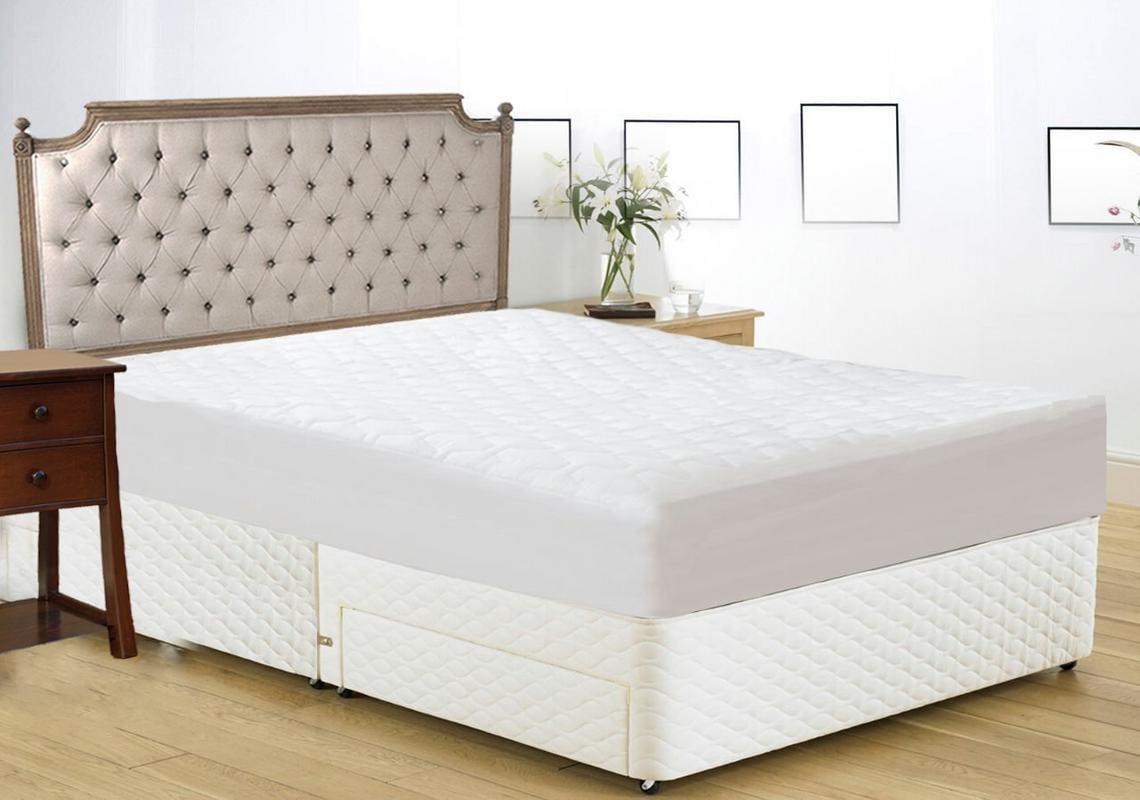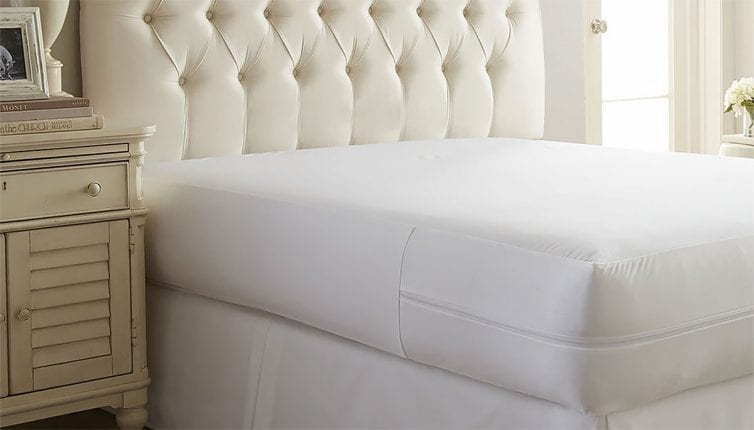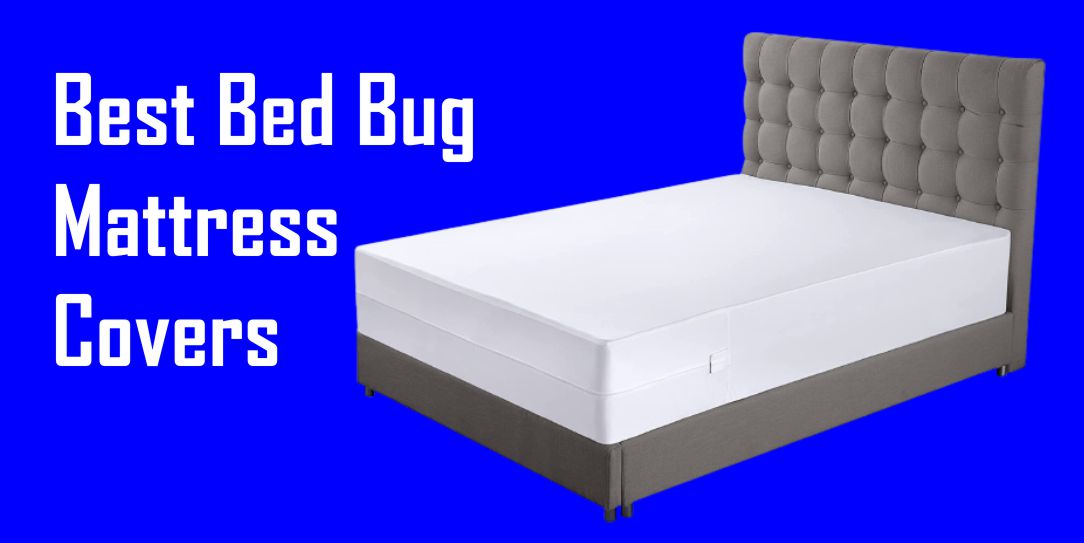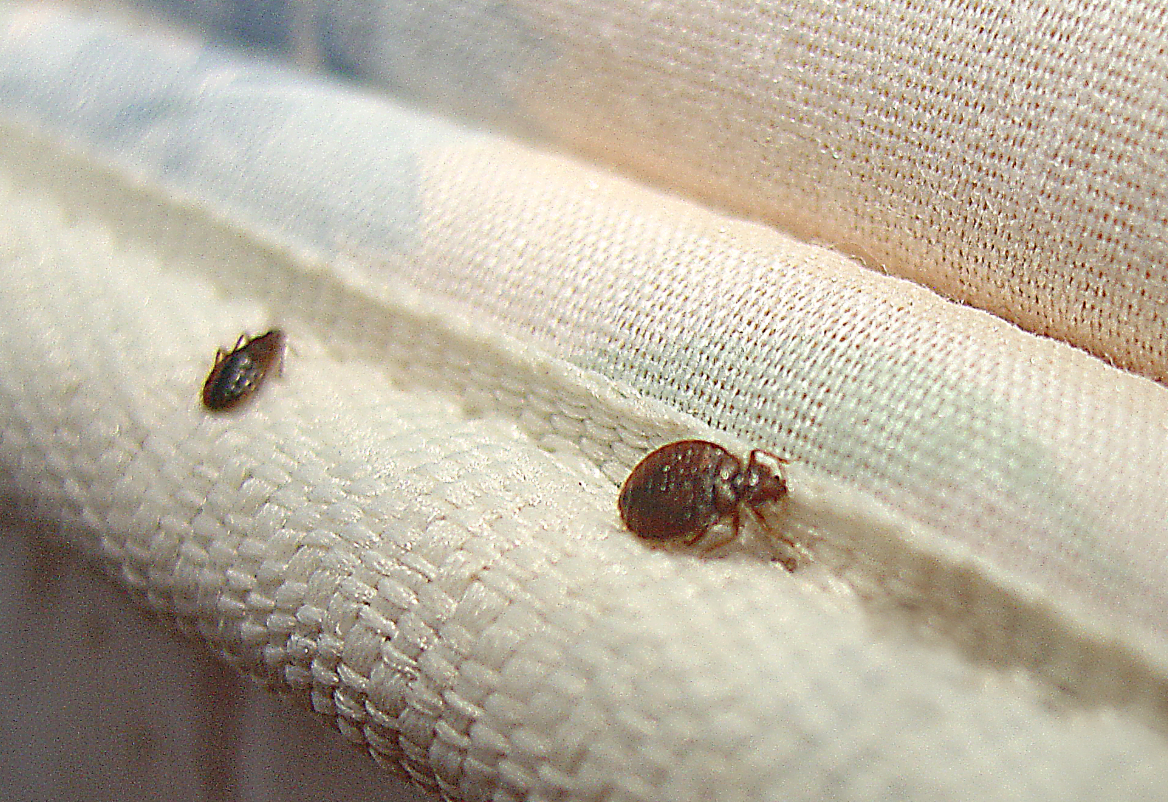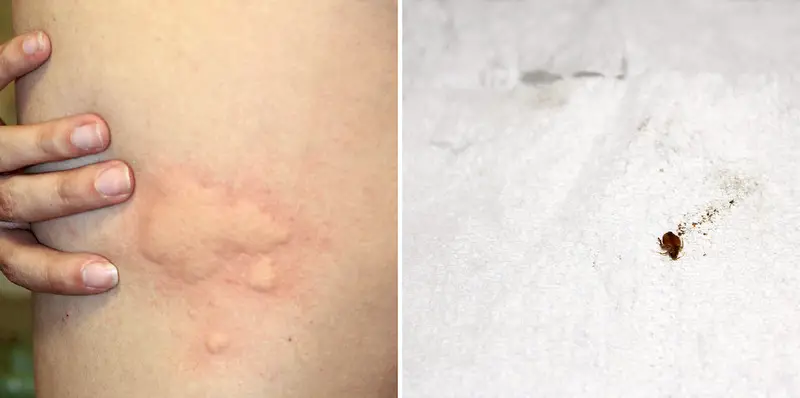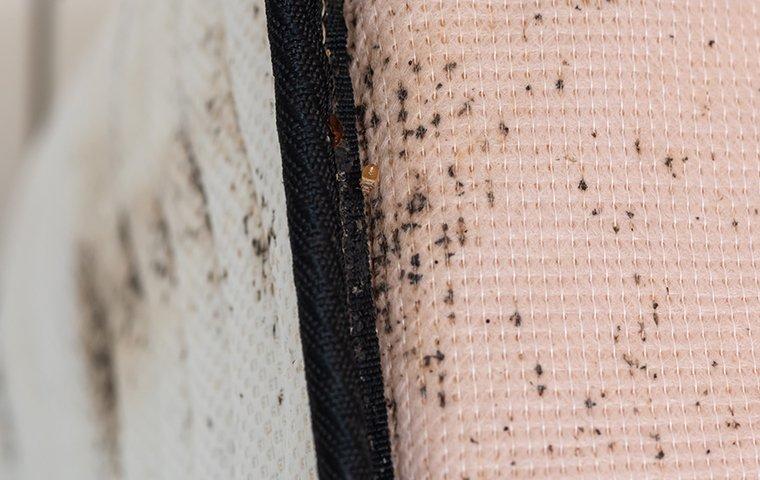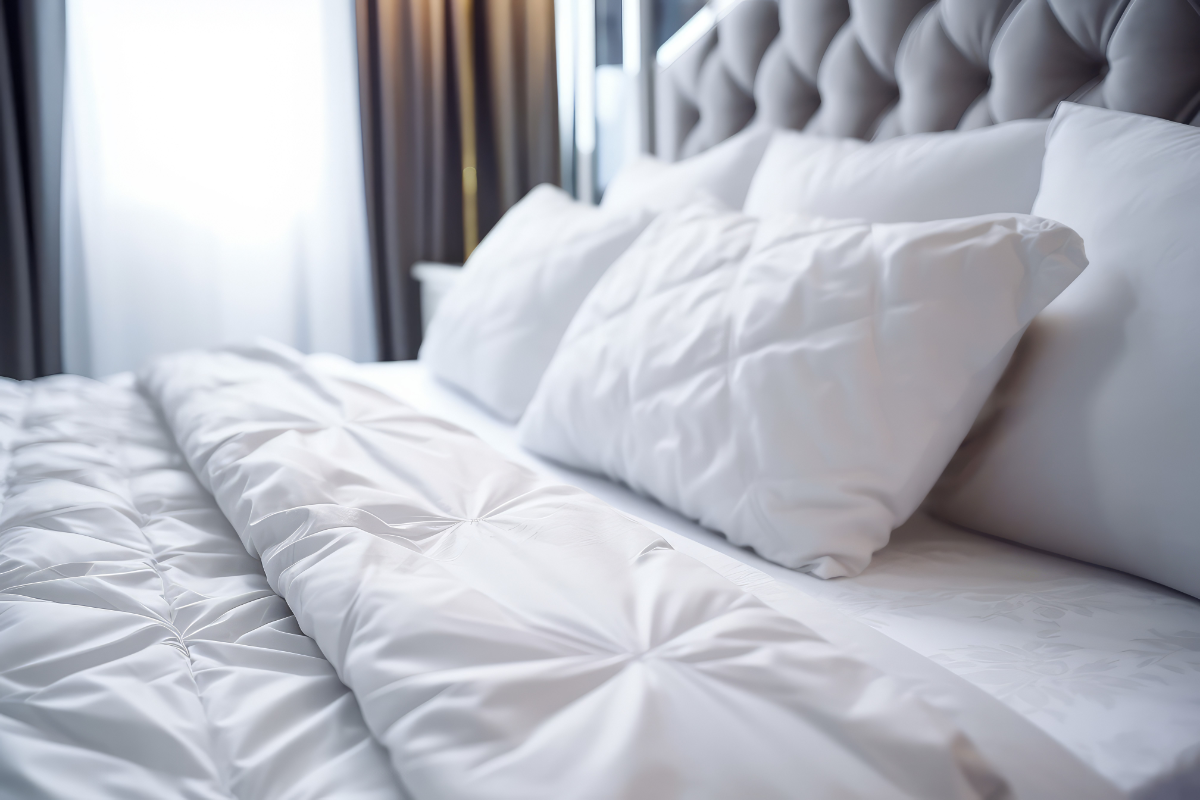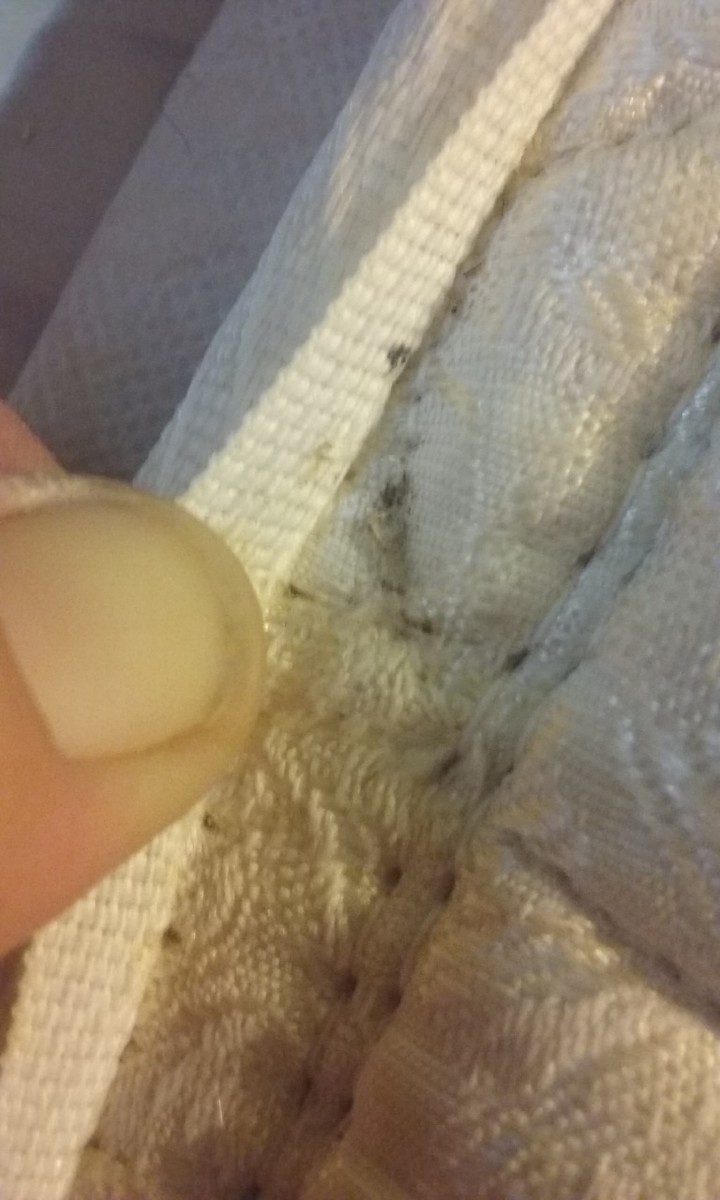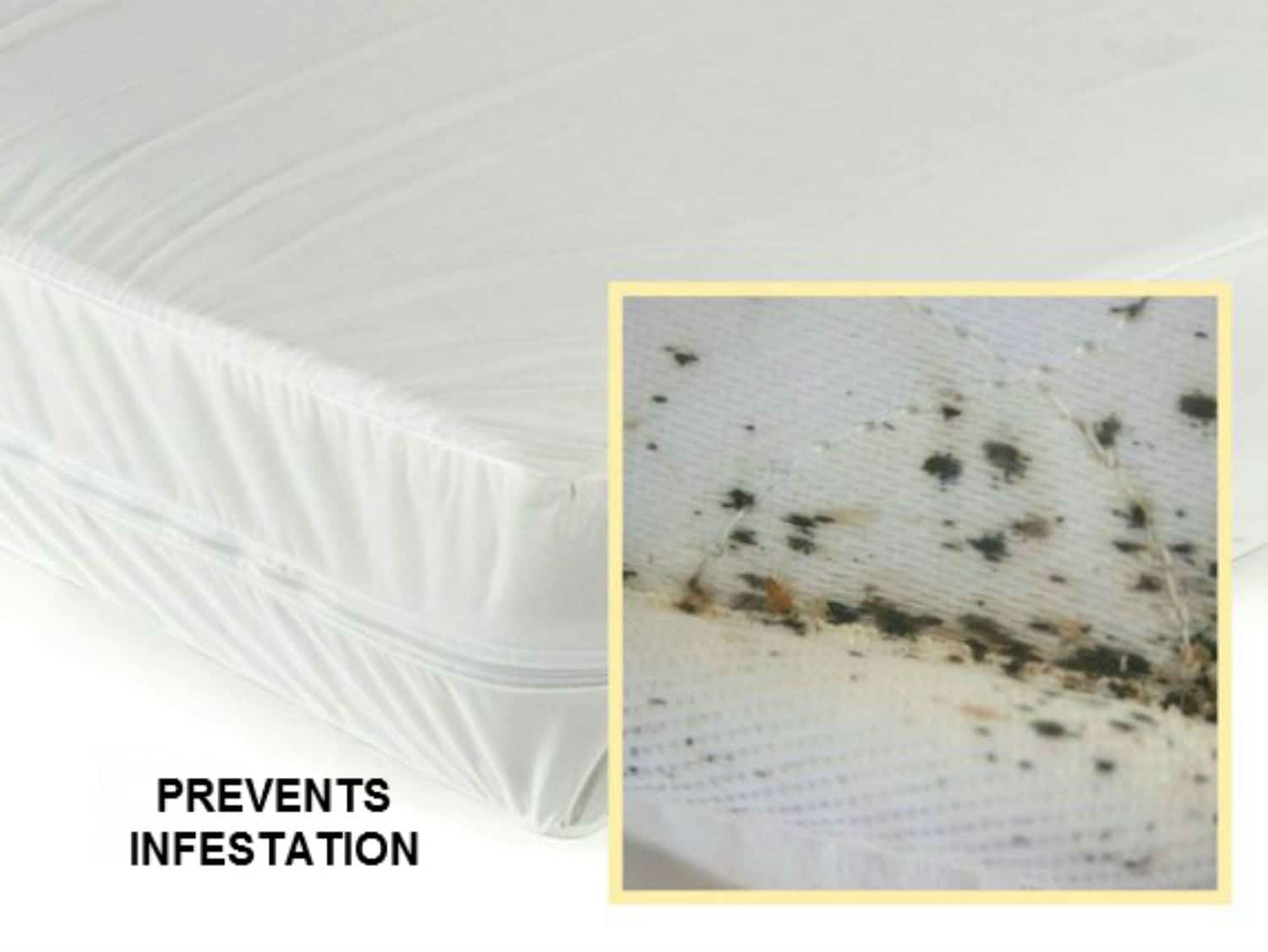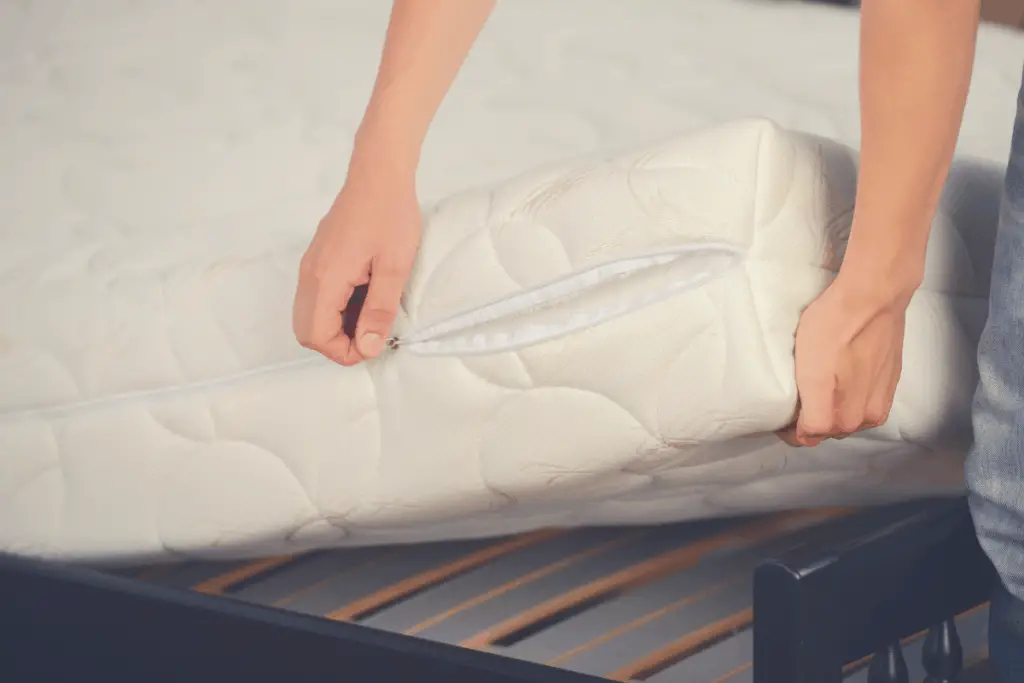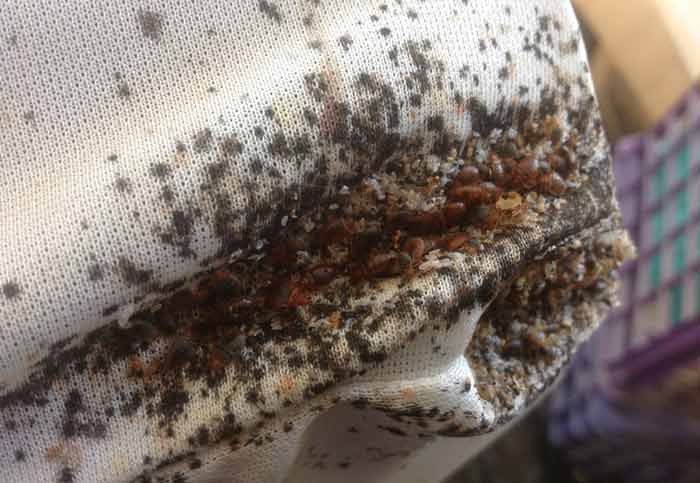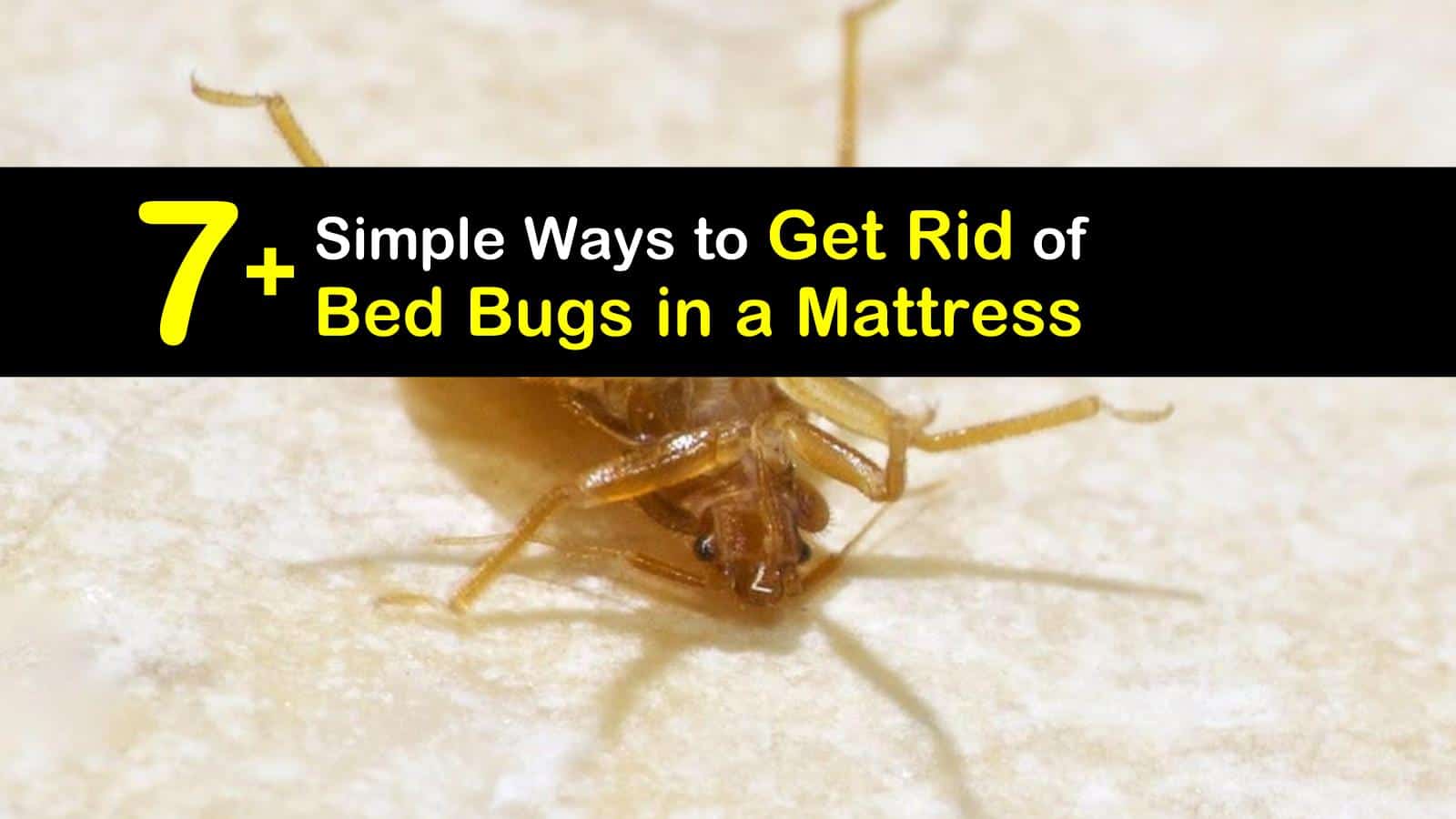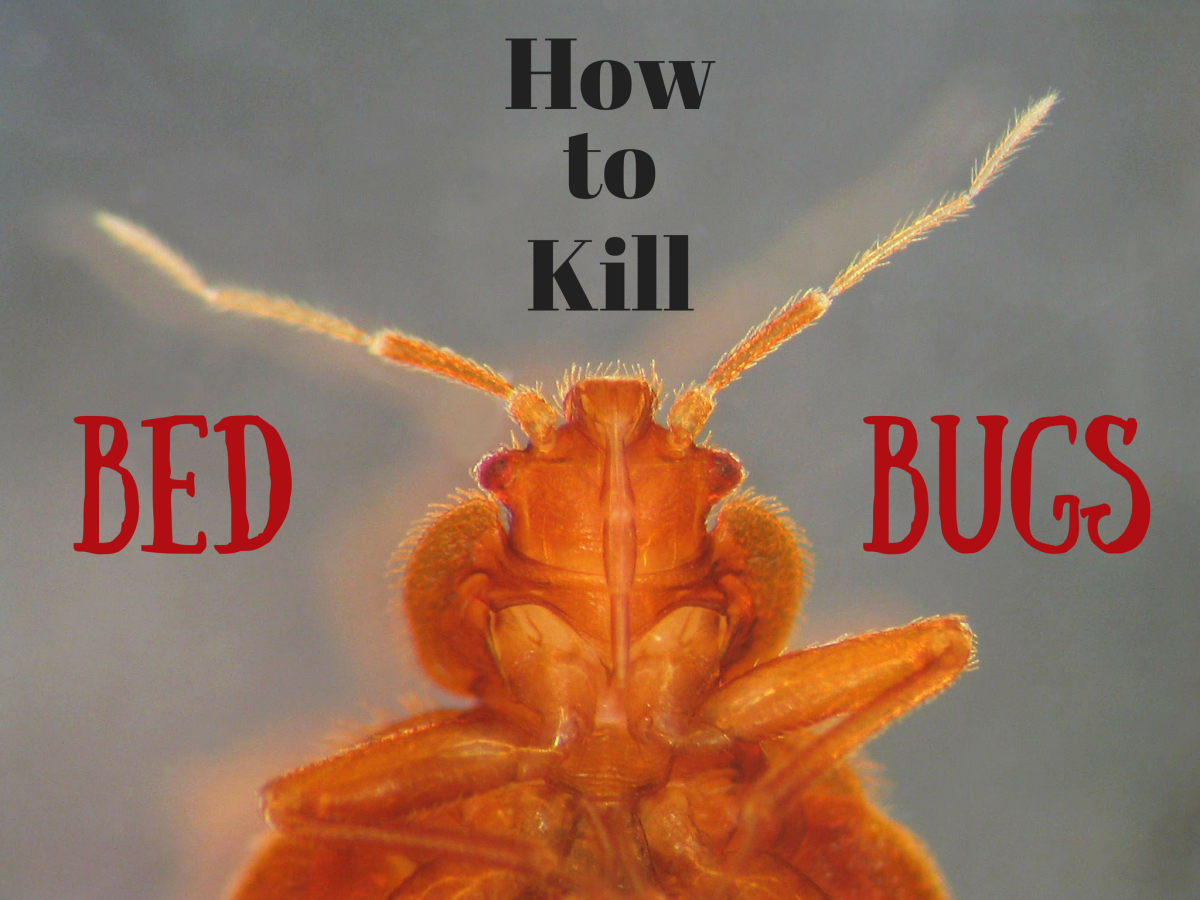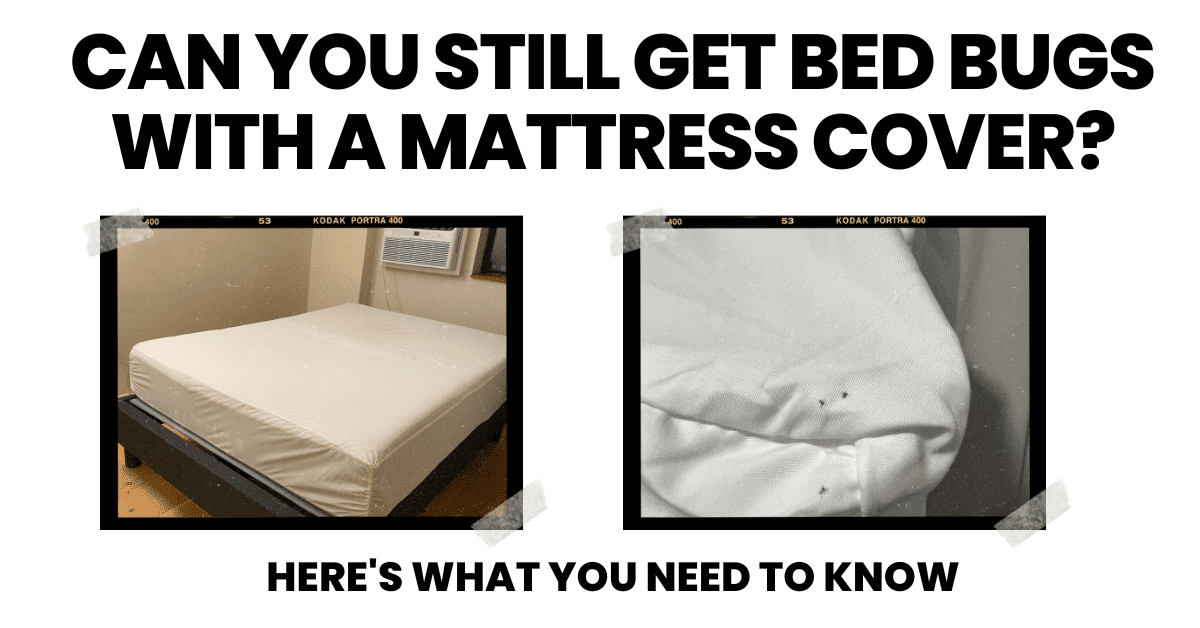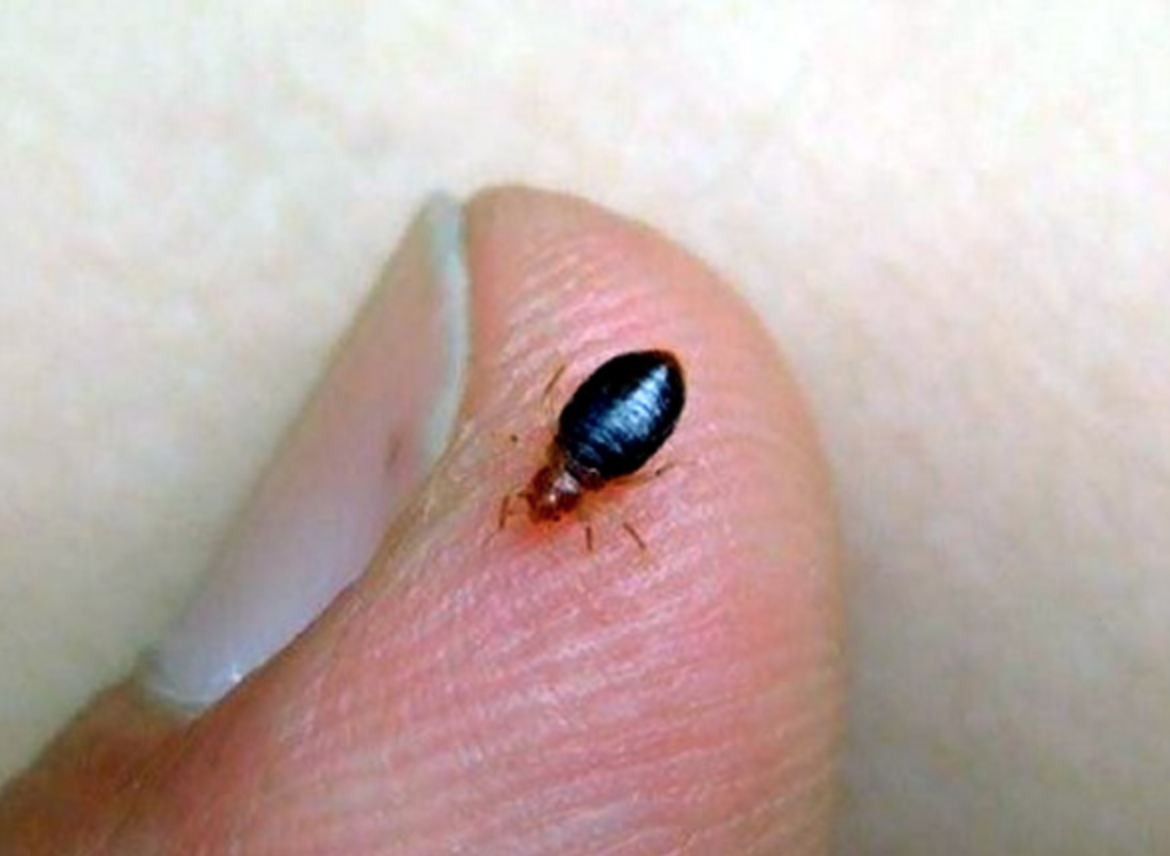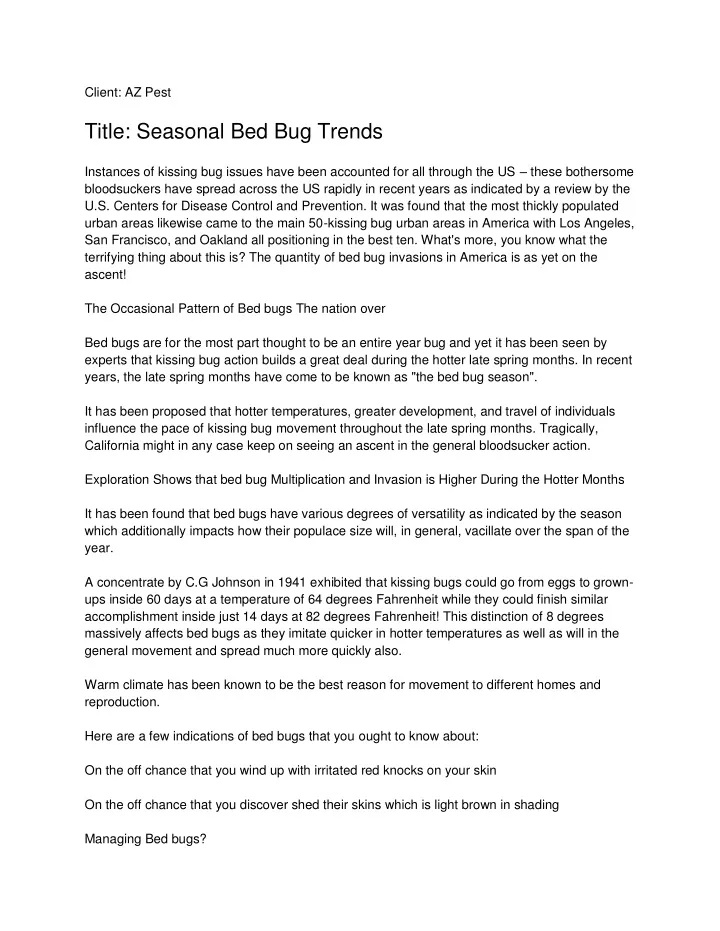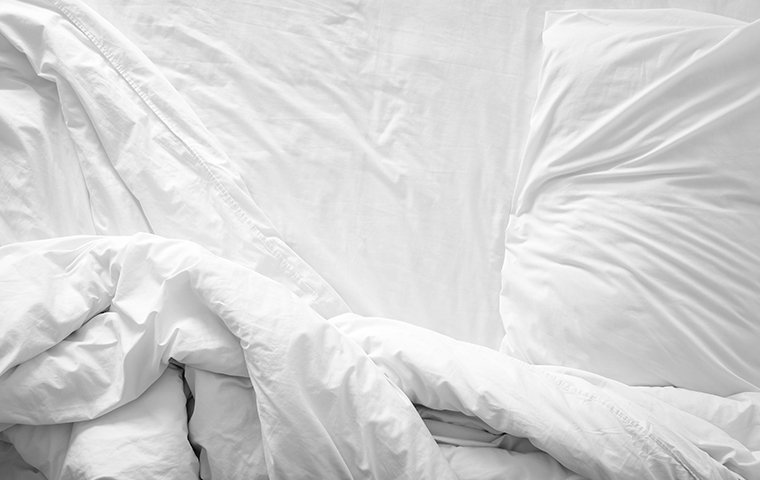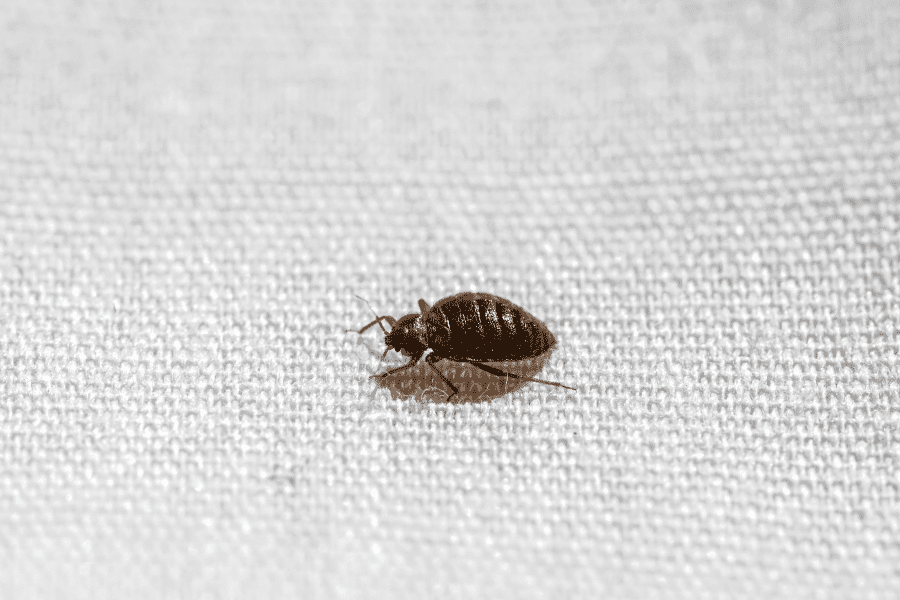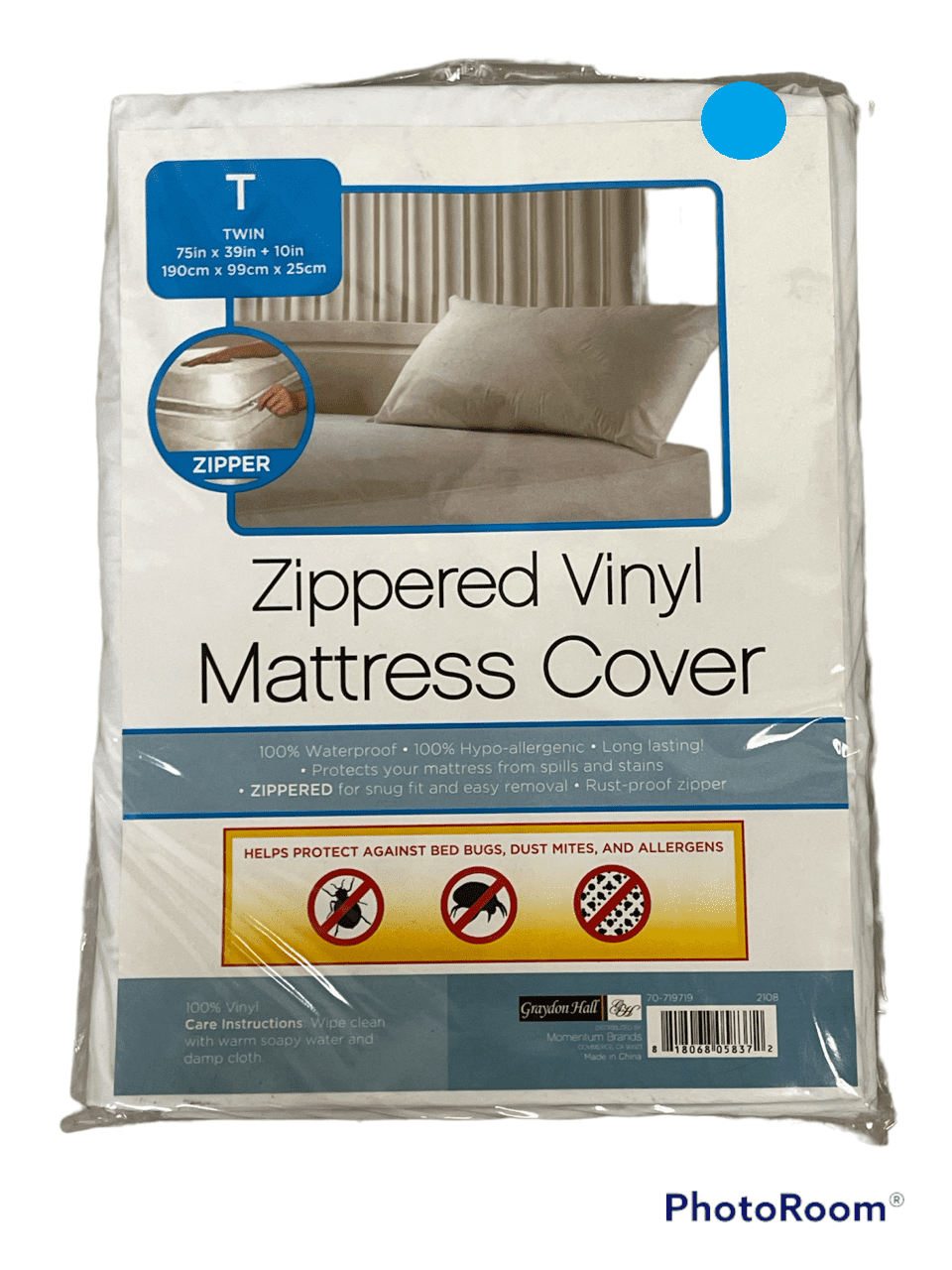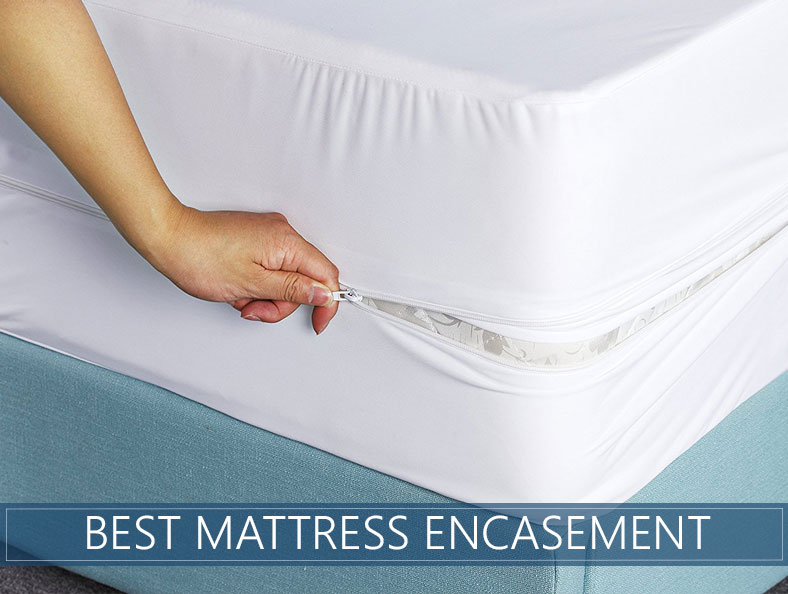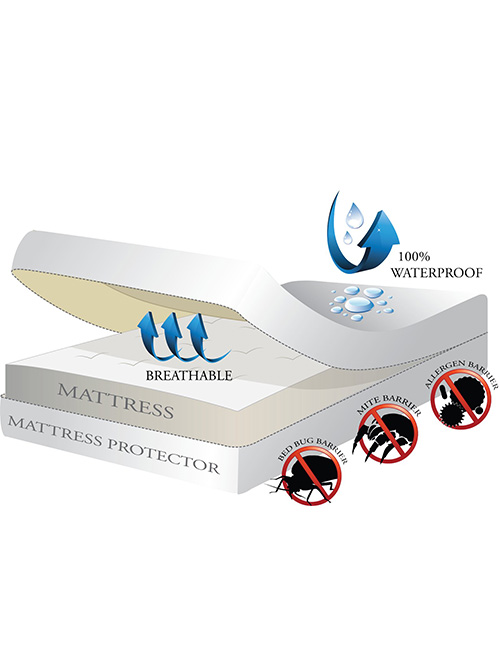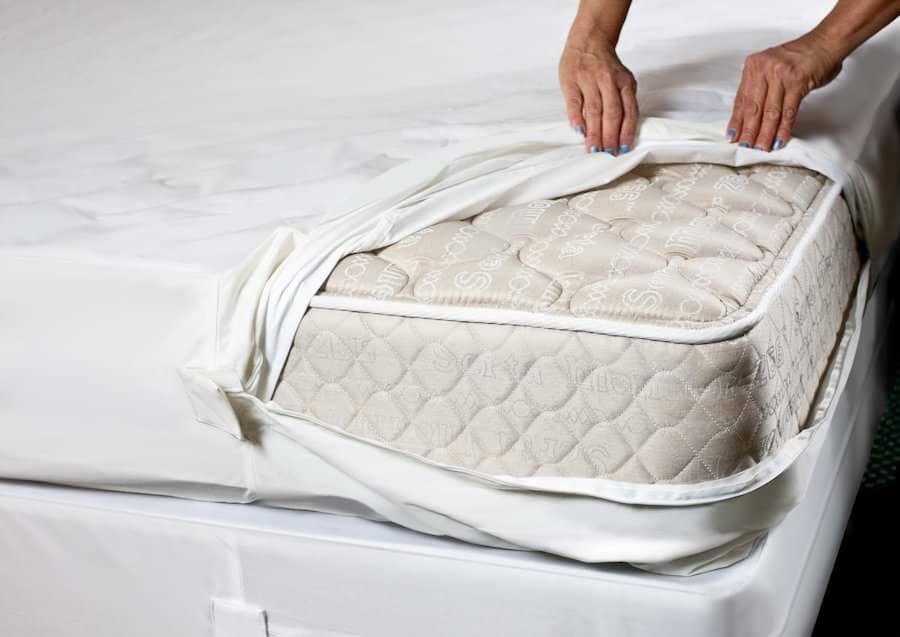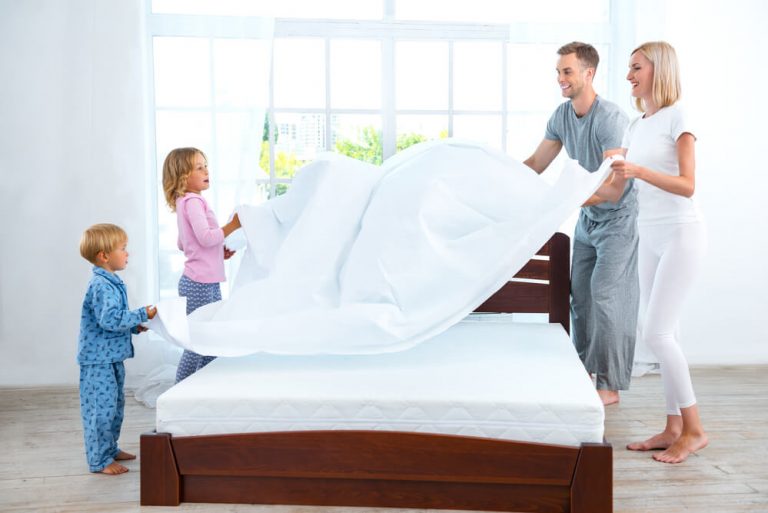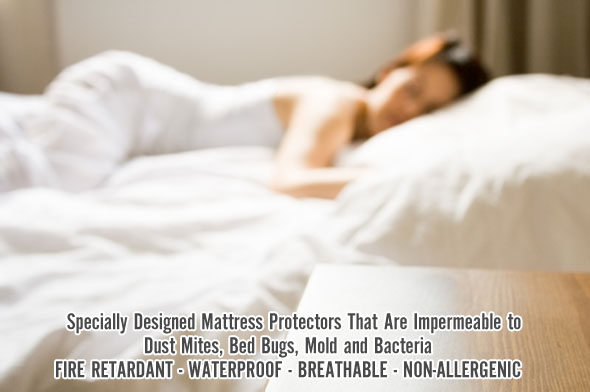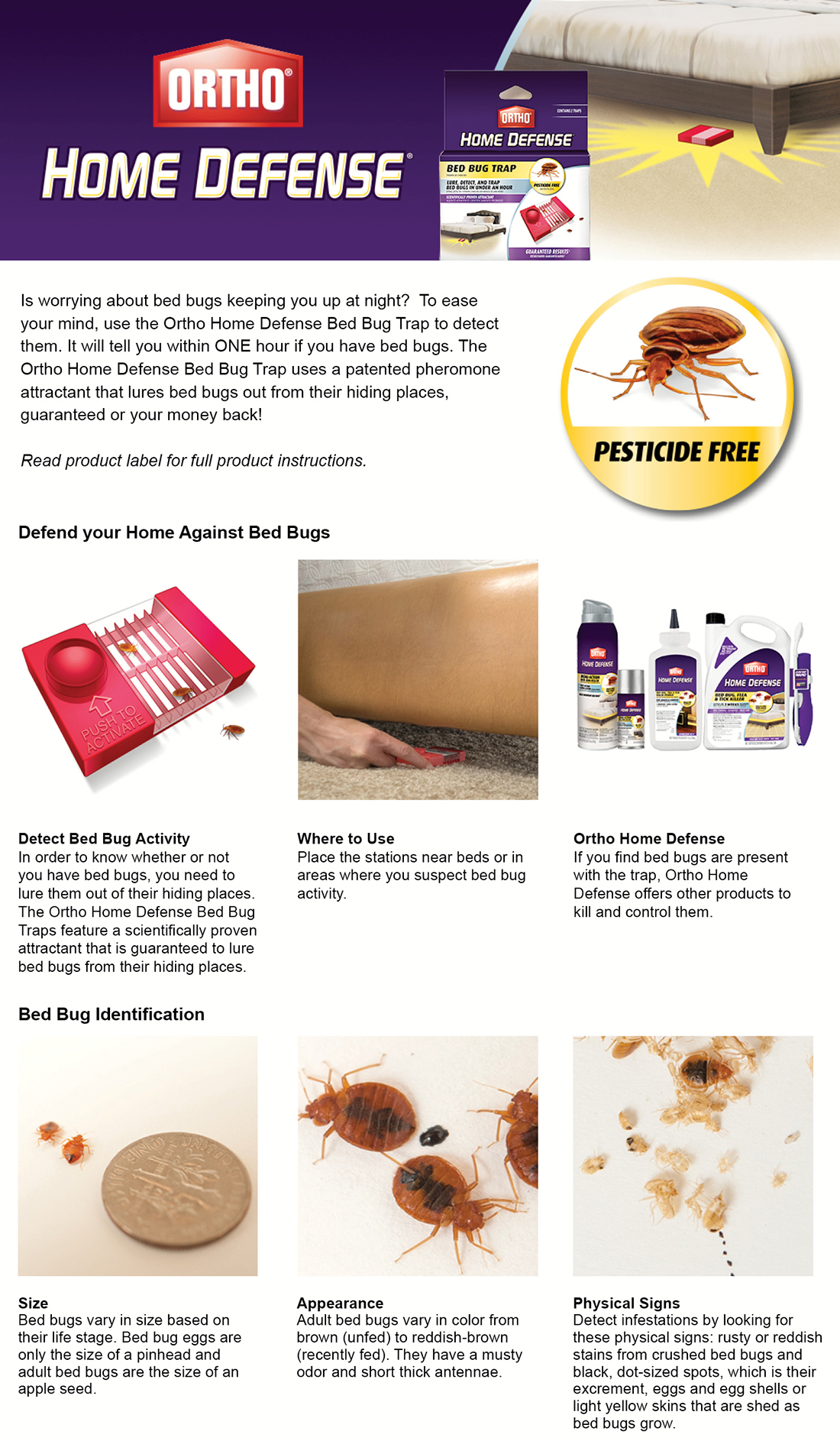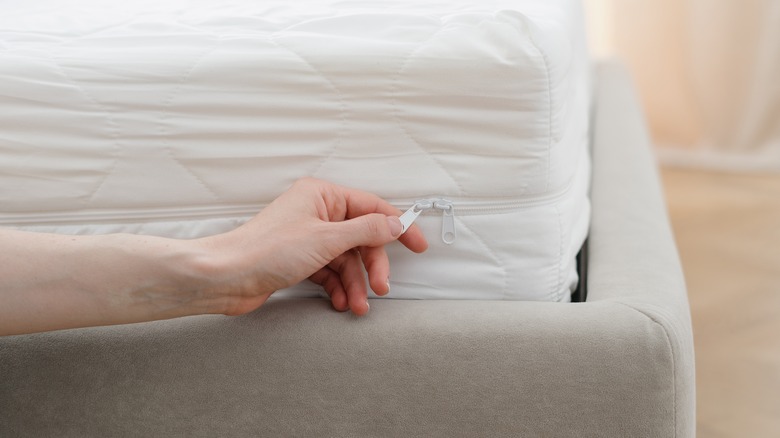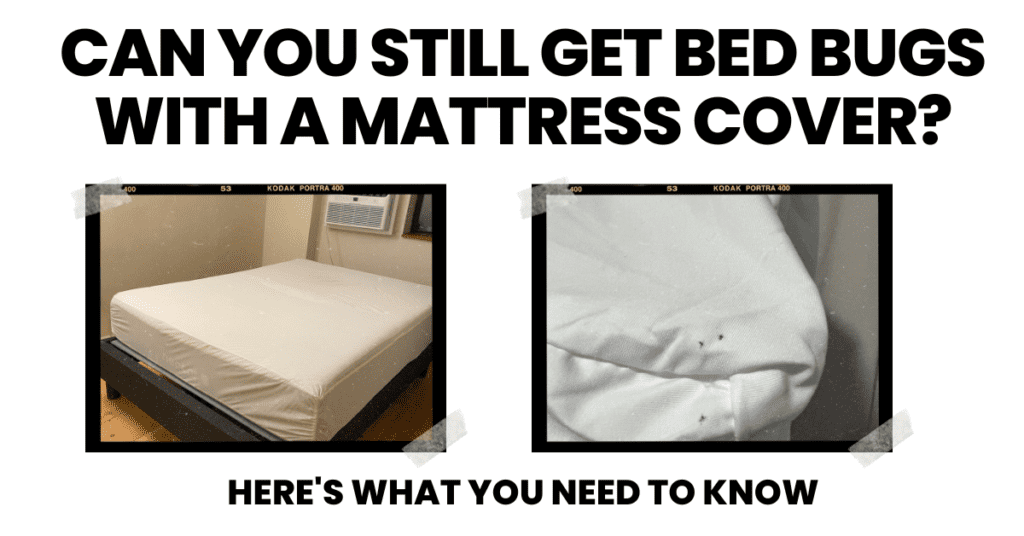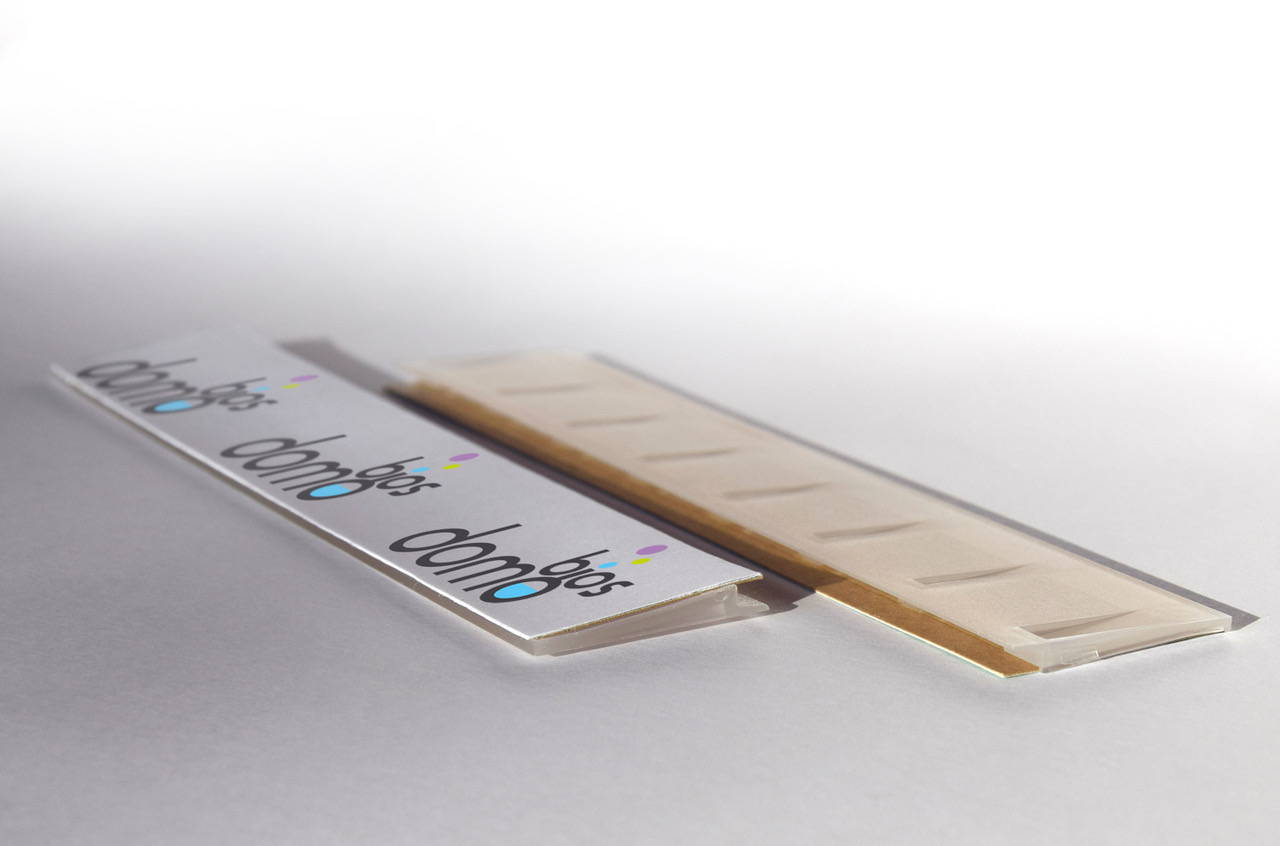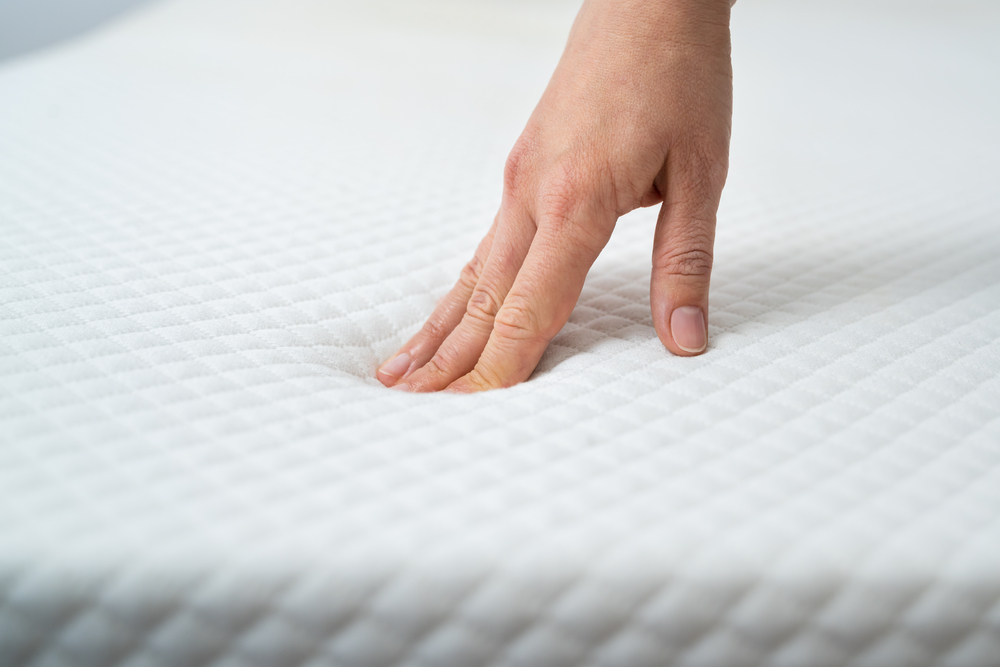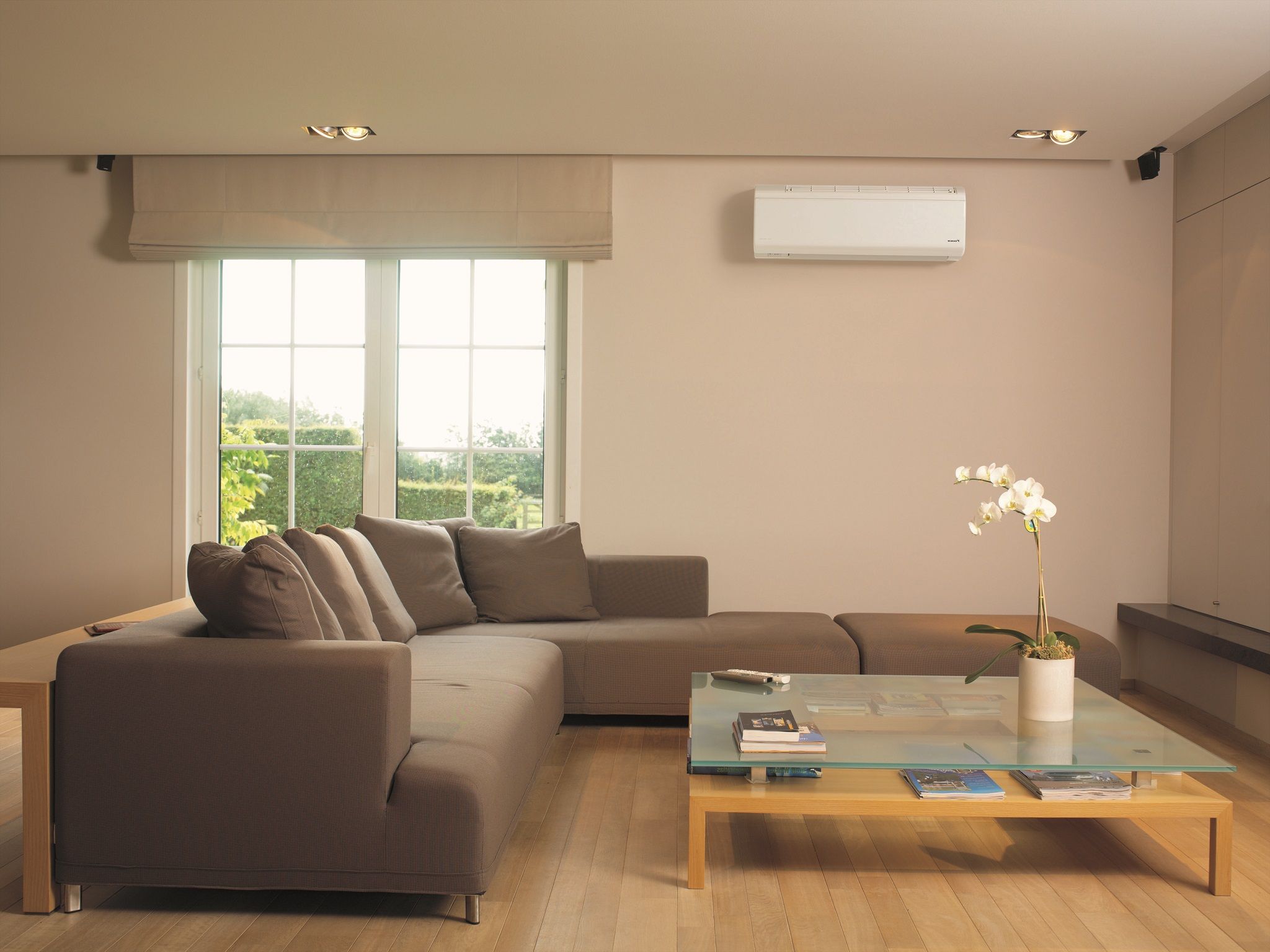If you've ever had to deal with a bed bug infestation, you know just how frustrating and difficult it can be to get rid of these pests. They can hide in the tiniest of spaces, making it nearly impossible to completely eliminate them. One common hiding spot for bed bugs is in your mattress. But fear not, there is a solution - mattress covers. When it comes to bed bug prevention and control, mattress covers are your best friend. Not only do they trap and eliminate any existing bed bugs, but they also act as a barrier to prevent future infestations. But how exactly do you get rid of bed bugs in a mattress cover? Let's find out. The first step is to identify the infested areas. Look for small, reddish-brown bugs, eggshells, and dark spots (bed bug feces) on your mattress. Once you've located the infestation, it's time to take action. Start by removing all bedding and pillows from your mattress. Then, using a vacuum with a hose attachment, thoroughly vacuum the entire mattress, paying special attention to seams, crevices, and tufts where bed bugs like to hide. Be sure to empty the vacuum immediately after to prevent any bed bugs from escaping. Next, wash all bedding and pillows in hot water and dry on high heat. This will kill any bed bugs and their eggs that may have been hiding in your bedding. Once your mattress is clean and dry, it's time to encase it in a bed bug-proof mattress cover. Look for covers specifically designed for bed bug protection, with features such as zipper closures and reinforced seams. This will ensure that no bed bugs can escape or enter your mattress. Finally, place the encased mattress back on your bed and make sure the cover is securely zipped shut. Any bed bugs that were trapped inside will eventually die from starvation. It's important to leave the encasement on for at least a year to ensure that all bed bugs are eliminated.1. How to Get Rid of Bed Bugs in a Mattress Cover
Not all mattress covers are created equal when it comes to bed bug protection. It's important to do your research and invest in a high-quality cover that is specifically designed to prevent bed bugs. Look for covers that are made with tightly woven fabric that bed bugs cannot penetrate. They should also have a zipper closure with a small teeth design, as this will prevent any bed bugs from squeezing through the zipper. Additionally, reinforced seams and a waterproof barrier are important features to look for. Some top-rated mattress covers for bed bug protection include SafeRest, Utopia Bedding, and LINENSPA. These covers have received high ratings for their effectiveness in trapping and eliminating bed bugs.2. Best Mattress Covers for Bed Bug Protection
The short answer is yes, bed bugs can get trapped in a mattress cover. However, the key is to make sure you have a high-quality, bed bug-proof cover that is properly installed. As mentioned earlier, look for covers with small teeth zippers and reinforced seams to prevent bed bugs from escaping or entering. It's also important to regularly inspect your mattress cover for any tears or holes that bed bugs could use to escape. Proper installation is also crucial. The cover should completely encase the mattress, with no gaps or openings. It's also important to make sure the zipper is fully closed and the cover is securely tucked in under the mattress.3. Can Bed Bugs Get Trapped in a Mattress Cover?
Even if you don't currently have a bed bug infestation, using a mattress cover is a proactive measure to prevent future infestations. As mentioned earlier, mattress covers act as a barrier, preventing bed bugs from entering your mattress. Be sure to regularly inspect your mattress cover for any signs of bed bugs or tears. If you do find any bed bugs, immediately wash and dry the cover on high heat to kill them. It's also a good idea to vacuum your mattress and bedding regularly to catch any bed bugs before they have a chance to multiply.4. Using Mattress Covers to Prevent Bed Bug Infestations
Not all mattress covers are created equal, and some may claim to be bed bug-proof when they are not. The best way to tell if your mattress cover is truly bed bug-proof is to check the label. Look for covers that specifically state they are designed for bed bug protection. You can also do your own testing by placing a few bed bugs inside the cover and observing if they are able to escape. It's also a good idea to read reviews and do your research before purchasing a mattress cover to ensure its effectiveness.5. How to Tell if Your Mattress Cover is Bed Bug Proof
No, mattress covers do not actively kill bed bugs. However, they do trap and contain them, preventing them from feeding and eventually leading to their death. Mattress covers are not a standalone solution for bed bug infestations, but they are a crucial component in the elimination process.6. Do Mattress Covers Kill Bed Bugs?
Aside from trapping and eliminating bed bugs, there are many other benefits to using a mattress cover for bed bug control. These covers can also protect against dust mites, allergens, and spills, making them a great investment for overall mattress protection. Additionally, mattress covers can extend the lifespan of your mattress by providing an extra layer of protection from wear and tear. They are also easy to clean and maintain, simply remove and wash as needed.7. The Benefits of Using a Mattress Cover for Bed Bug Control
Proper installation of a mattress cover is crucial for effective bed bug control. Follow these steps to ensure your cover is properly installed: 1. Remove all bedding and pillows from your mattress. 2. Thoroughly vacuum your mattress, paying special attention to seams, crevices, and tufts. 3. Wash all bedding and pillows in hot water and dry on high heat. 4. Place the encased mattress back on your bed. 5. Make sure the cover is completely encasing the mattress with no gaps or openings. 6. Securely zip the cover shut. 7. Tuck in any excess cover under the mattress.8. How to Properly Install a Mattress Cover for Bed Bug Protection
You may have heard the terms "mattress cover" and "encasement" used interchangeably, but there is a difference between the two. Mattress covers typically only cover the top and sides of the mattress, while encasements cover the entire mattress, including the bottom. Both options are effective for bed bug prevention, but encasements provide an extra layer of protection by completely sealing off the mattress. If you already have a mattress cover and are experiencing a bed bug infestation, it's recommended to upgrade to an encasement for better protection.9. Mattress Covers vs. Encasements for Bed Bug Prevention
When it comes to choosing the right mattress cover to trap bed bugs, here are a few tips to keep in mind: 1. Look for covers specifically designed for bed bug protection. 2. Check the label to ensure the cover is made with a tightly woven fabric. 3. Look for small teeth zippers and reinforced seams. 4. Read reviews and do your research before purchasing. 5. Consider upgrading to an encasement for extra protection. By following these tips, you can rest easy knowing that your mattress is protected from pesky bed bugs.10. Tips for Choosing the Right Mattress Cover to Trap Bed Bugs
A Comprehensive Guide to Protecting Your Mattress from Bed Bugs

Introduction
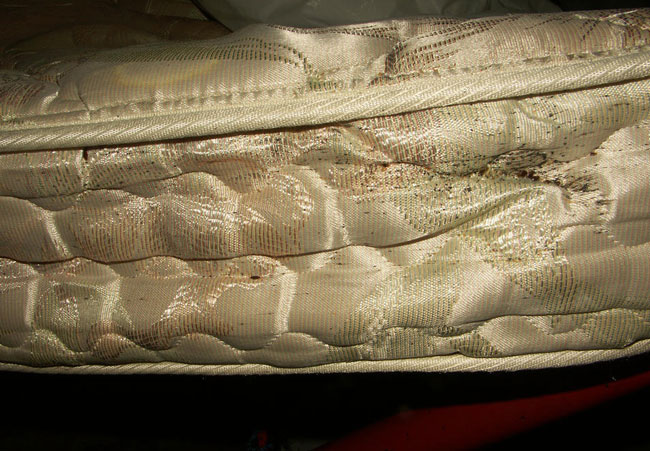 When it comes to designing your dream home, choosing the perfect mattress is a crucial decision. Not only does it affect the quality of your sleep, but it also plays a significant role in the overall aesthetics and comfort of your bedroom. However, one thing that can quickly turn a peaceful slumber into a nightmare is the presence of bed bugs. These tiny pests are notorious for infesting mattresses and causing itchy, uncomfortable bites. But fear not, there is a simple solution to keeping your mattress bed bug-free - a mattress cover. In this article, we will discuss how a mattress cover can trap bed bugs and protect your investment.
When it comes to designing your dream home, choosing the perfect mattress is a crucial decision. Not only does it affect the quality of your sleep, but it also plays a significant role in the overall aesthetics and comfort of your bedroom. However, one thing that can quickly turn a peaceful slumber into a nightmare is the presence of bed bugs. These tiny pests are notorious for infesting mattresses and causing itchy, uncomfortable bites. But fear not, there is a simple solution to keeping your mattress bed bug-free - a mattress cover. In this article, we will discuss how a mattress cover can trap bed bugs and protect your investment.
The Importance of a Mattress Cover
 While there are many DIY methods of getting rid of bed bugs, prevention is always better than cure. The best way to protect your mattress from these pesky insects is by using a mattress cover. Not only do these covers act as a physical barrier, preventing bed bugs from entering and exiting your mattress, but they also make it easier to detect and eliminate any existing infestations. Additionally, a good quality mattress cover also protects your mattress from spills, stains, and wear and tear, making it a worthwhile investment for any homeowner.
While there are many DIY methods of getting rid of bed bugs, prevention is always better than cure. The best way to protect your mattress from these pesky insects is by using a mattress cover. Not only do these covers act as a physical barrier, preventing bed bugs from entering and exiting your mattress, but they also make it easier to detect and eliminate any existing infestations. Additionally, a good quality mattress cover also protects your mattress from spills, stains, and wear and tear, making it a worthwhile investment for any homeowner.
How Does a Mattress Cover Trap Bed Bugs?
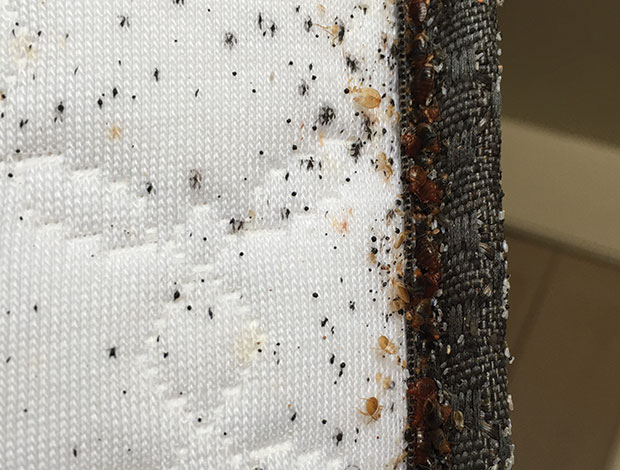 Bed bugs are small, flat, and can easily hide in the seams and crevices of your mattress. However, with a mattress cover in place, they are unable to penetrate the fabric and make their way into your mattress. The tight weave of a mattress cover acts as a barrier, preventing bed bugs from feeding on you while you sleep and laying eggs in your mattress. This not only protects your mattress from damage but also keeps you safe from potential health risks associated with bed bug bites.
Bed bugs are small, flat, and can easily hide in the seams and crevices of your mattress. However, with a mattress cover in place, they are unable to penetrate the fabric and make their way into your mattress. The tight weave of a mattress cover acts as a barrier, preventing bed bugs from feeding on you while you sleep and laying eggs in your mattress. This not only protects your mattress from damage but also keeps you safe from potential health risks associated with bed bug bites.
Choosing the Right Mattress Cover
 When it comes to selecting a mattress cover, it's essential to choose one that is specifically designed to trap bed bugs. Look for covers that are made of durable material, have a tight zipper closure, and come with a warranty. It's also important to choose a cover that fits snugly over your mattress, leaving no room for bed bugs to sneak in.
Other main keywords to consider when choosing a mattress cover include waterproof, hypoallergenic, and breathable.
These features not only provide added protection but also ensure a comfortable and healthy sleeping environment.
When it comes to selecting a mattress cover, it's essential to choose one that is specifically designed to trap bed bugs. Look for covers that are made of durable material, have a tight zipper closure, and come with a warranty. It's also important to choose a cover that fits snugly over your mattress, leaving no room for bed bugs to sneak in.
Other main keywords to consider when choosing a mattress cover include waterproof, hypoallergenic, and breathable.
These features not only provide added protection but also ensure a comfortable and healthy sleeping environment.
In Conclusion
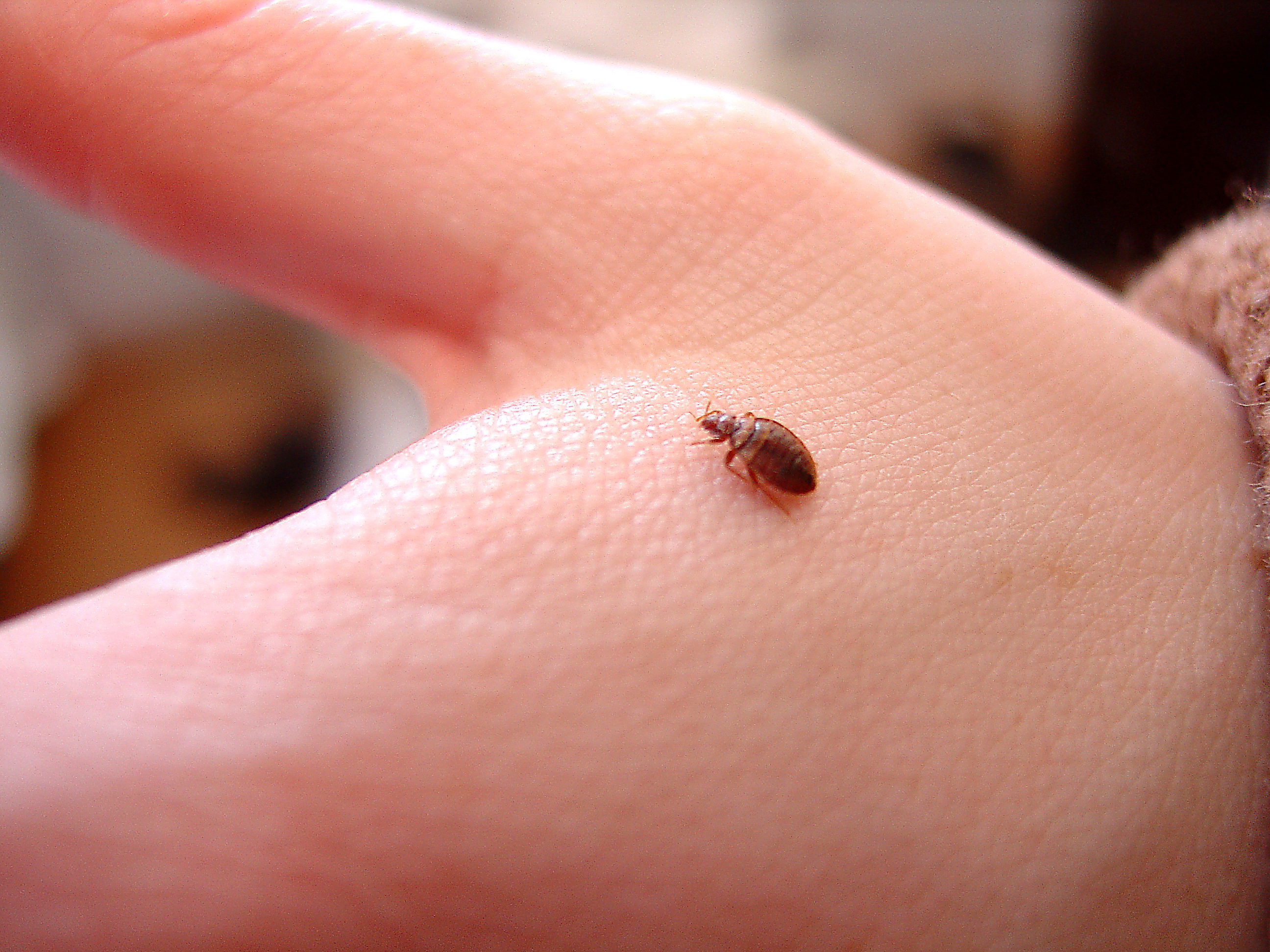 A mattress cover is a simple yet effective solution for protecting your mattress from bed bugs. By acting as a physical barrier, it prevents these pests from infesting your mattress and causing potential health and financial issues. When choosing a mattress cover, be sure to opt for one that is specifically designed to trap bed bugs and offers additional features for added protection and comfort. With a good quality mattress cover in place, you can rest easy knowing that your mattress is protected from bed bugs and will provide you with a peaceful and comfortable sleep every night.
A mattress cover is a simple yet effective solution for protecting your mattress from bed bugs. By acting as a physical barrier, it prevents these pests from infesting your mattress and causing potential health and financial issues. When choosing a mattress cover, be sure to opt for one that is specifically designed to trap bed bugs and offers additional features for added protection and comfort. With a good quality mattress cover in place, you can rest easy knowing that your mattress is protected from bed bugs and will provide you with a peaceful and comfortable sleep every night.









